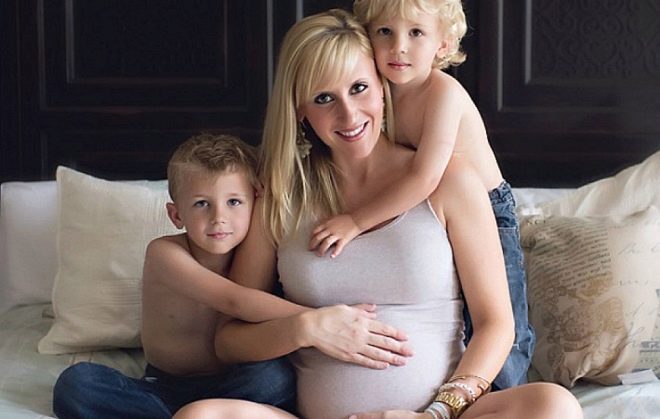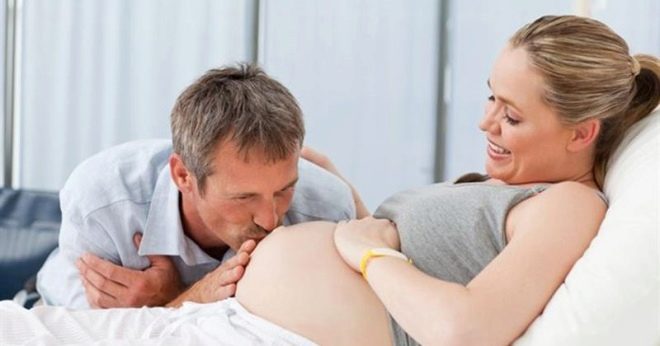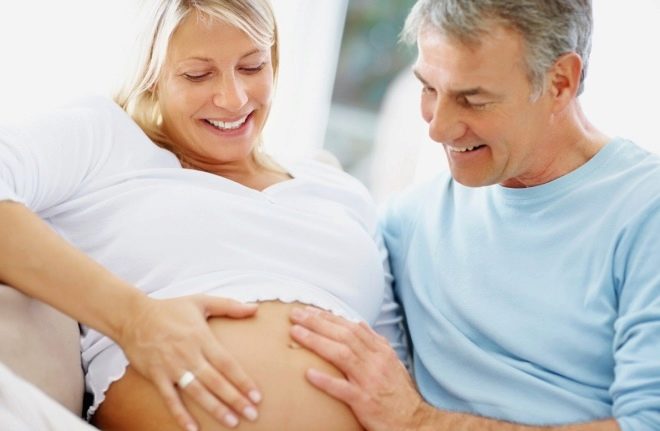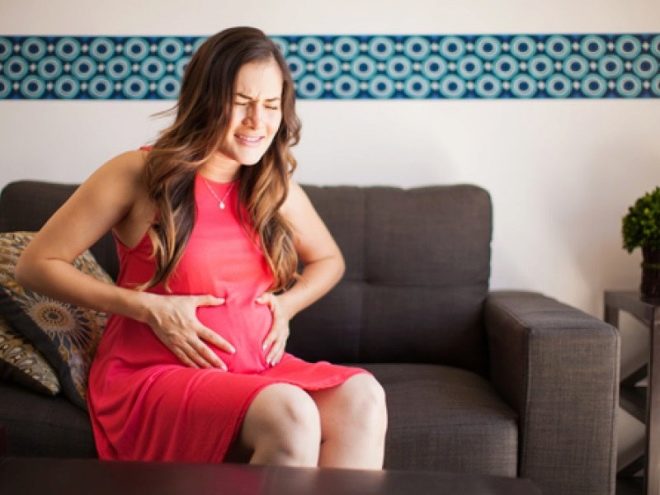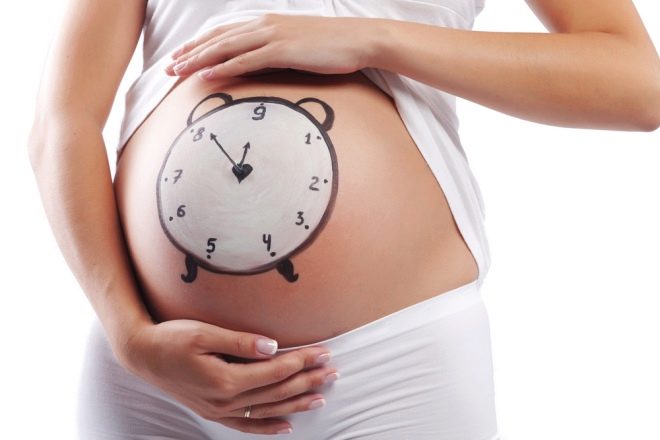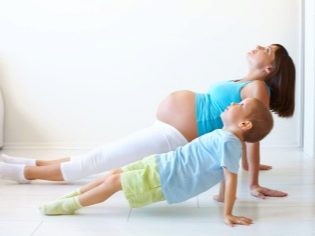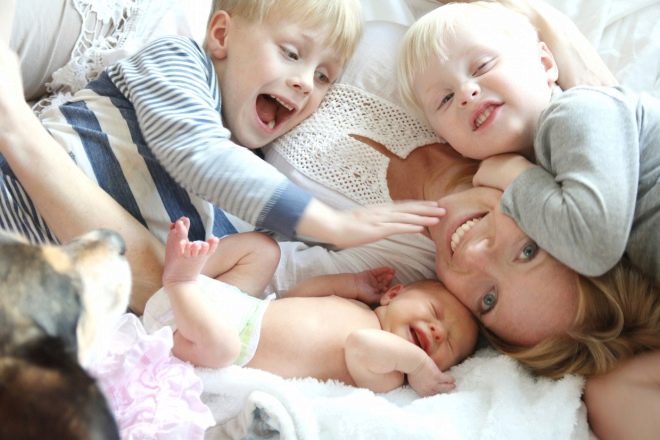Features of the third birth
Even 20 years ago, families with three children were very rare. Usually Russians were limited to one, maximum two children. Today, more and more women decide to have a third child. We will not talk about the reasons, about the impact of state support measures on the demographics as a whole, but let's talk directly about third genera. In this material we will tell you whether they have their own distinctive features, how the third childbirth passes and what you need to be ready experienced woman who decided to become a mother for the third time.
Differences and specifics
Only very superficial or far from the heart of the matter people argue that the third or fourth pregnancy proceeds habitually, without any special emotions, because the woman in this natural process is already perfectly familiar. In fact, the presence of a large amount of information only increases sometimes anxiety. And the third, and any other childbirth in a row, is always an important, exciting event. Do not underestimate its value.
Third birth is always a big surprise. They are completely unpredictable, they should not and will not follow the scenario of the first two. Already for this reason, it is difficult to immediately and unequivocally tell whether the birth of a baby will be easier or faster, harder or more difficult. The third pregnancy is a kind of lottery in which no one can calculate the outcome. Too many factors affect the specifics of the third on the account of childbirth.
Age
According to statistics, the majority of the third children in a row appear in Russia for women who are over 36-37 years old. Every seventh third child in a ranking appears in a woman, whom 40 years. As the age of mothers and fathers increases, both the pregnancy itself and the birth itself acquire a lot of specific features. It becomes more difficult, of course, to carry a baby to a woman with age, the resources of her body are smaller and scarcer than at birth, and therefore the likelihood of unpleasant complications is higher.
Getting pregnant with age becomes more difficult. Not every cycle is ovulatory, not every fertilization has a chance to end with implantation. The risk of genetic abnormalities and chromosomal diseases in a child increases due to the aging of the genetic material that is embedded in the germ cells of the parents.
The big plus is that “age-related” parents are better psychologically prepared for the birth of a child, they already know the subtleties of caring for babies and the possible difficulties of such parents do not frighten. They are indeed much calmer and more responsible than those who are going to the hospital for the firstborn, because life experience, financial condition, and career achievements by this age usually do not cause doubts and anxieties, there is housing, there is a stable income.
With this in mind, a woman goes to a third birth more confident. This affects the process of birth of the child, and at an early stage of his life.
Mothers of large families who are less likely to experience the effects of postnatal depression, it is easier for them to become lactating, childbirth itself does have all the prerequisites to be easier if there are no other negatively influencing factors.
The break between pregnancies and the duration of labor
In this case plays a role, how much time elapsed between the birth of the second child and the onset of the third pregnancy.The best interval, according to doctors, is the period lasting 2-3 years. This time is usually quite enough for the mummy’s body to fully recover from previous births, even if it was a cesarean section. At the same time, a longer break leads to certain complications - the tissues of the uterus gradually lose their elasticity, and the body “forgets” generic experience. At the physiological level, this can manifest itself in a relatively long period of contractions and attempts, by slowly opening the cervix. But such a scenario is rather a rarity and occurs mainly in women who have allowed a very long break - more than 10-15 years.
Usually, the stages of birth at the birth of the third baby proceed faster. All of them, starting with contractions and ending with attempts, take much less time, because the birth canal is sufficiently expanded and much better prepared for the physiological reflex process.
Sometimes the only stage that can significantly complicate the situation is the birth of the placenta. The walls of the uterus are more "flabby" after two previous births, stretched, it is possible that they have scars from operations, injuries, and therefore there is a risk of ingrowth of the placenta in the uterus tissue, a total increment of the "baby seat", which will require manual intervention, and sometimes excision parts of the endometrium or even removal of the reproductive organ completely after the baby is born.
Psychological readiness for pain
Practice shows that women who go to give birth for the third time have a good idea of the essence of the process, even if they are far from medicine, and therefore more restrained, they are not afraid of the unknown. The ability to control oneself and listen to the commands of the obstetrician, as a rule, naturally reduces pain in childbirth. On their own experience, such women in labor know that you need to breathe correctly and not force yourself arbitrarily, walk and change your body position during contractions and make yourself a massage of the sacrum.
However, there are situations in which a third childbirth scares a woman more than the previous ones. This is mainly found in those who have given birth to a hard time the previous time.
Fear of repetition of negative experience is quite strong and requires special preparation, sometimes with a specialist, otherwise the fear of pain will not be able to get rid of, which may in itself significantly complicate the birth process.
Generic risks
Under them refers to the individual obstetric history of women. Usually, by the time the third child is conceived, a woman is already acquiring a rather impressive personal medical history, in which there is a place for gynecological ailments, abortions, and childbirth. Given the age, there is a high probability that there are chronic diseases. All this creates certain risks of complications both in childbirth and in the postpartum period.
Preparing for the third birth, the woman should be ready for the fact that she gives birth in three hours if the delivery is rapid (the risk of giving birth is significantly increased), and for the process to be delayed, especially if the interval between pregnancies is long.
Increased risk of preterm birth. At the same time, the “precursors” will be noticed by the expectant mother at the period after 35-36 weeks of gestation. Often the third pregnancy ends in spontaneous childbirth at 36-37 weeks, and almost always at 38-39 weeks. Up to 40 weeks, the third pregnancy in the long run is very, very rare.
In childbirth, due to overdistension of the uterine walls, problems may arise with the intensity of contractions and coordination of the labor activity, which may cause primary birth weakness, when contractions are weak, that expansion takes place very slowly, or there may be a weakness in the stress period, which is called secondary generic weakness. In this regard, the possibility of medical induction of labor or emergency caesarean section is not excluded, if the stimulation does not lead to the desired result.
In the early postpartum period, the newly-made mother of three children may have a longer recovery period. The uterus, whose walls are fairly stretched, is reduced worse, and therefore postpartum hemorrhages may appear, the risk of inflammation and spread of infection increases. Women after the third birth slowly lose weight, their figure comes to its original form longer, if it comes at all.
If against this background, postpartum depression occurs, it often becomes protracted and severe than in women after the first and second birth. The only good news is that the very probability of depression in the mother of three children is not so great.
Other important nuances
Third children, according to existing medical statistics, less likely to receive birth injuries. This is due to a sufficient stretching of the muscles of the perineum, vagina, the baby’s head passes more freely and unhindered. This is a definite plus.
On the other hand, a woman should know that if she had tears in the first or second birth of the perineum, the cervix, then there is a fairly significant risk (about 50%) that the tears will recur at the birth of the third child.
In the early and more distant postpartum period, more often than in other women, three times mothers aggravate hemorrhoids, varicose veins, uterine fibroids, manifest diabetes, problems with the heart and urinary system can occur. This is due to the fact that childbirth rather significantly undermines the state of female immunity, and therefore may develop as a primary disease, and exacerbate existing chronic diseases.
Stages of labor activity - details
Higher risks are not a reason to give up the happiness of being the mother of three children. All pregnant women who are waiting for the third, fourth and subsequent baby, will be more closely monitored in the consultation during gestation, as well as in the maternity hospital, where the woman enters the hospital with the onset of labor or after the discharge of water. It should be noted that the disclosure is faster, and therefore the first hours since the onset of contractions already lead to the opening of the cervix by 1-3 fingers. therefore In the maternity hospital you need to go when the contractions will be repeated at intervals of 10 minutes, and not at 5 minutes, as recommended by primiparous.
The positive point is that the stage of contractions will be shorter. Both the inner and outer necks of the cervix usually open simultaneously, which increases the probability of giving birth on the way to the hospital or giving birth rapidly, which increases the risk of injury to the child. Convulsions in giving birth for the third time usually from the beginning to full disclosure last no more than six hours, if there are no concomitant complicating factors.
In the second stage of labor, the needy one, usually there is no great difficulty for an experienced woman in labor. But problems may lie in the stretching of the muscles of the uterus and the press, and therefore even timely and correct attempts will not be strong enough.
Conducting a third birth requires special attention from medical personnel. If any unforeseen situation develops, the decision must be made quickly, accurately and correctly. Usually, doctors try not to risk, and if there are negatively influencing factors, taking into account the age and burdened history, the patient recommends a planned cesarean section.
Training
Proper preparation for childbirth for a woman who is going to become a mother for the third time should be given special attention. It is important to keep the body in shape, move, and engage in light physical exertion in order to improve muscle tone. Special attention should be paid to the preparation of pelvic floor muscles. Strengthen them preferably before conception. In extreme cases, you need to start doing Kegel exercises after the end of the first trimester, if the obstetrician-gynecologist, who is observing the pregnancy, has nothing against it and does not find grounds that are a contraindication to such gymnastics.
It is important not to miss the scheduled visits to the doctor, to monitor the weight gain and to be sensitive to their own well-being.
It is important for women with a negative Rh factor to consult a doctor at the planning stage of pregnancy, and then inject immunoglobulin in a timely manner, because with each subsequent pregnancy, if the partner has a positive rhesus and the child inherits it, the likelihood of a serious and severe Rh conflict significantly increases.
Opinion of doctors and reviews of pregnant women
According to feedback from obstetricians, pregnant women for the third time behave in a more disciplined manner, follow the recommendations with great precision. This is very important, because the complications of this pregnancy can develop at any stage. For example, cervical insufficiency, which is called cervical cervical, in pregnant women for the third or fourth time is recorded in 20% of cases, that is, every fifth pregnant woman has increased risks of miscarriage.
Often women themselves complain that during the third pregnancy, they more often showed signs of toxicosis, their legs became swollen at the end of the term of gestation. Medical specialists agree with them - preeclampsia in multipaths does develop more often.
According to women, third births often began unnoticed. The woman simply did not have time to understand that her labor pains were already going on, and when she understood this and arrived at the maternity hospital, the uterus was fully or almost completely opened and she had to go straight to the delivery room from the emergency department.
Regarding the intensity of pain, many mummies in their responses to the thematic forums claim that the contractions were no less painful than during the first and second birth. There are also many who claim that the birth of the third baby was not only fast, but also without acute pain.
Without exception, mothers who have decided to have a third child are in solidarity with one thing: the third child is the “second youth”, the second breath, great happiness and joy for mothers, fathers, and brothers or sisters who are already growing up in a family. And for the sake of this happiness, you can be patient and stand firmly in all the tests that nature has prepared for a woman in the process of carrying a baby and its birth.
For the third birth, see the following video.

